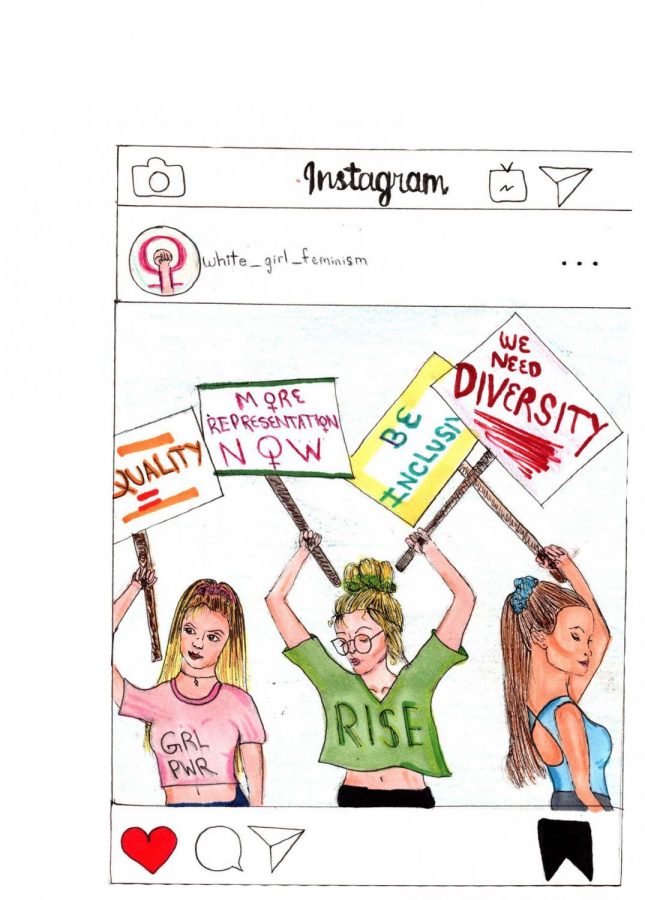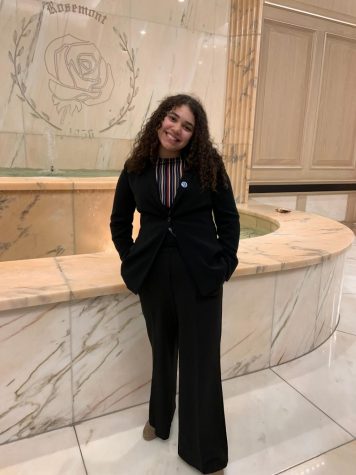Social media feminism must be inclusive
December 13, 2019
The social media activism phase has sprung upon us within the last few years. Social media allows us to share the current news of what is happening in people’s lives, raise awareness on issues and influence change in other people. Social media users often see feminist pages with millions of followers that share important moments for us as a society to see. Many mainstream feminist Instagram pages like @feminist or @itsfeminism claim that they are inclusive of all, but in reality, they do not share Black issues.
White feminism is an example of an ideology that doesn’t advocate for other communities aside from their own. White feminism is not a recent phenomenon, but the concept has recently resurfaced due to social media. Social media activists not sharing issues that cater to other oppressed groups reinforces white supremacy since the post may not affect change for the marginalized groups who need it the most. Researching what you post beforehand and sharing out issues of oppressed groups are important to affect social change. Police brutality is an example of a Black issue that white feminist pages do not share. Philando Castile, Eric Garner and Laquan McDonald, all widely known cases of law enforcement abuse against Black men, sadly are very common, and are spread on certain social media pages, but are not on the feminist pages with the most followers or on teen social media pages. Not sharing Black issues downplays their seriousness and makes them seem less important when compared to the common problems of white women that social media pages often share. The media often represents Black men as violent and dangerous, while in reality not speaking enough about the brutality of Black men. Social media pages not sharing the brutality of Black men contributes to an ideology promoted by media that they are dangerous, and not sharing these stories makes it seem like Black lives are not valuable. A common issue feminist Instagram pages talk about is the pay gap between men and women; nevertheless, many ignore the fact that Black women are paid less than white women. These posts don’t acknowledge the true deficits these differences in pay create for Black people. According to PayScale, white women make 80 cents to every dollar a white man makes, while Black women make 74 cents to a white man’s dollar.
Feminist pages ignoring the fact that women of color make less money than white women in a way contributes to white supremacy because certain marginalized groups are not actually being advocated for. It is understandable to preach for equal pay, but these pages should be sharing how this issue impacts other communities in addition to their own.
Although very little is shared about the Black community on social media, followers of these pages may see a few posts about Black people, specifically during Black History Month in February. The only issue is that feminist pages only really post powerful Black figures from history like Martin Luther King Jr, Frederick Douglas, Harriet Tubman and Rosa Parks. Although these Black people are many of the most influential in history, social media users should also be sharing leaders from the Black community that may not typically be highlighted.
Representing the Black community with only these usual figures does not capture the range of modern to historic activists — people like Tarana Burke, the creator of the MeToo movement who shares stories of victims of sexual assault, and DeRay Mckesson, a Black Lives Matter activist who has led many civil rights protests. Social media should be used as a tool to expand the narrative of communities that lack full representation.
Genevieve Fleming, a junior, explains her view on social media and how she uses it as a form of activism.
“Yes, [I use it], but it doesn’t make a difference,” Fleming says. “Issues are shared on social media because one person who created it posts it, and then it gets posted around. People post it because of their outlook instead of actually caring about it, and it has nothing to do with their personal experience, and it is mostly about what will make them look good by their followers.”
Many people are choosing to use social media for the benefit of their online presence. Users posting about something they aren’t passionate about or really informed of feeds into white supremacy because they aren’t really making an actual change to diverse groups. When going onto social media, understanding what is being shared is important. Social media activism is very common to this day, and because it is so accessible, it has connected many communities and also allowed for many people to get more involved in activism. However, it can also be flawed because of how easy it is to use. Instagram pages only touching the surface of important issues will never allow us to truly address these issues for all groups impacted.
“If I am fighting for an issue I don’t know a lot about or I have no personal experience with, I am not fighting for it as hard as I would fight for something that I have experience with,” Fleming agrees.
We need to look at all perspectives that may not be included in initial posts. It is also important to research more on what you are posting before doing so because you would like to better educate other people about the topic. Using social media is supposed to be a place to share important issues and affect change, but we also need to share events of those who are oppressed aside from your own to change the effects of white supremacy.








